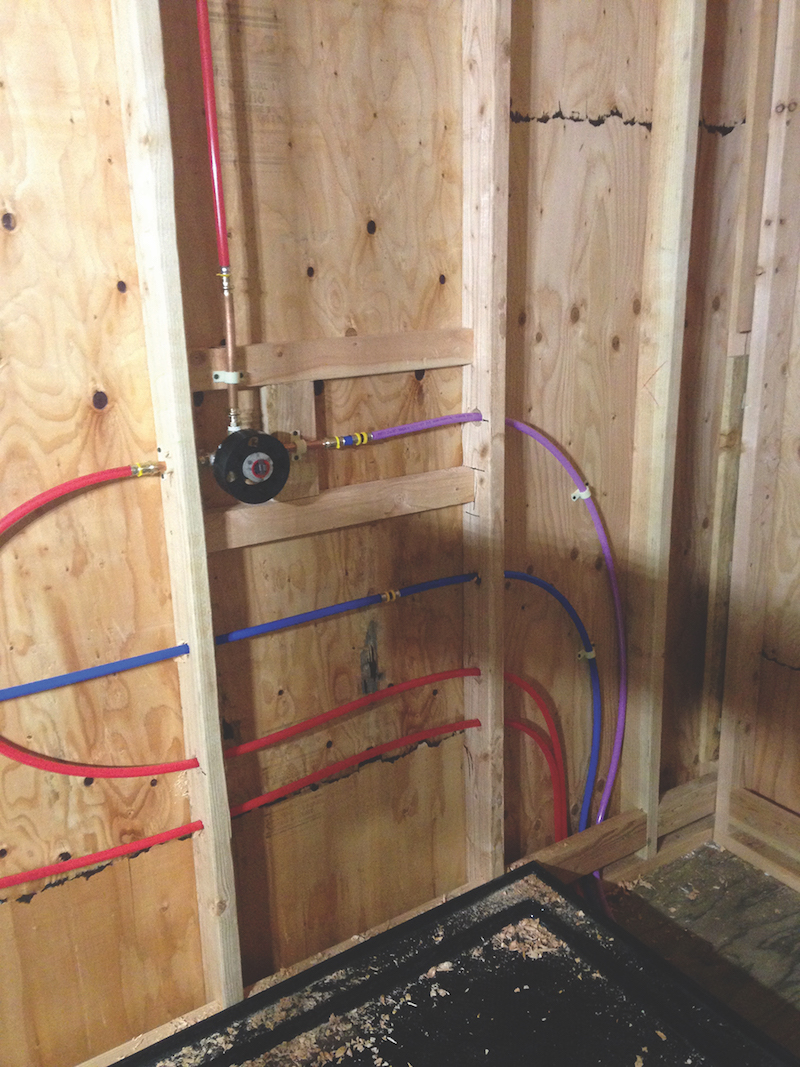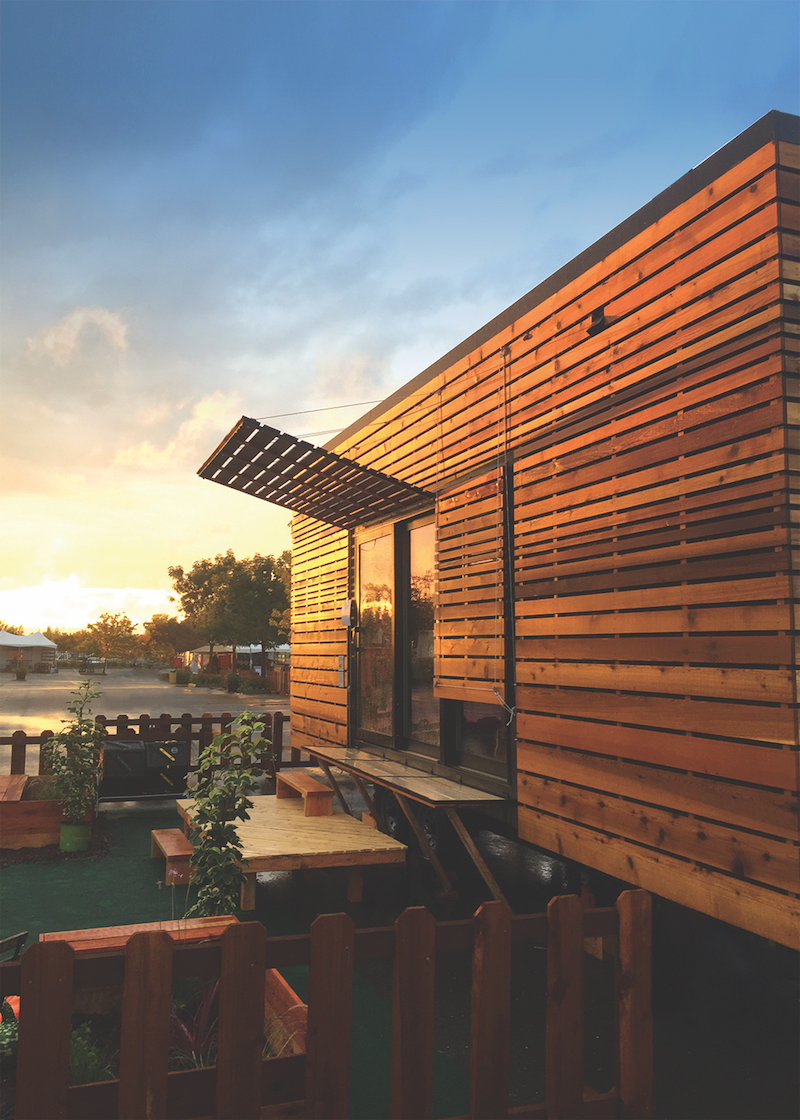The tiny-house craze is huge – TV shows, blogs, daily articles in the news and websites are dedicated to the trend. Now Viega has a hand in it, too – contributing to a tiny-house competition in California. The team from University of California, Berkeley, utilized different Viega products and finished second in the competition, pulling in some other awards as well.
Viega is a member of the Center for the Built Environment (CBE), a UC Berkeley-sponsored scientific research partner, so the collaboration on the tiny house grew from that relationship. Students from the CBE formed a team to compete in the tiny-house building competition, and Viega came on board as a sponsor of the entry, providing products, loaning tools and giving some advice to what became a very successful venture.
The Berkeley team wanted their tiny house to be completely off the grid, able to produce its own energy and use as little water as possible. With efficiency in mind, the team worked to create a system to recycle as much water as they could for a second use.
Laney Siegner, in her third year of the Energy and Resources group PhD program at Berkeley, was one of the project managers and led the design of the water and wastewater systems.
 The team used the Viega PureFlow system.
The team used the Viega PureFlow system.
“Our concept was to pump the greywater to planter boxes on the back end of the trailer/house and then filter it through the planter boxes, through a UV disinfection light, and then recollect it as filtered greywater,” Siegner said. “Our highly ambitious goal was to get the water back to potable, but we couldn’t quite achieve that. We did a lot of testing on it, and there was still a little turbidity, but we determined it was okay for several uses.”
The team made good use of the Viega PureFlow system, installing PureFlow PEX in red and blue for hot and cold potable water, and also purple for reclaimed water, as well as PureFlow Press Polymer fittings. The PEX in ½" and ¾" was utilized on the project, and the team was also able to use a ManaBloc in the mechanical room. They chose to cover it with clear plastic, so the plumbing is still visible in the completed home.
The PureFlow PEX products played a big role in the whole water system, with lots of tubing used not only for hot and cold water output, but to move the greywater through the recycling system.
The idea impressed the judges of the competition, and Berkeley’s team won the award for water conservation, as well as for overall sustainability.
“Viega’s support was essential and extremely important for the success of our project,” said Caroline Karmann, a PhD candidate at Berkeley who served as architect for the tiny house. “The high quality of Viega’s products has been a key aspect in the functionality of our water systems, which is unusual and complex since we are off-grid. We were profoundly lucky to have this collaboration with Viega.”
Read more about this project here.
Related Stories
| Aug 11, 2010
Jacobs, HDR top BD+C's ranking of the nation's 100 largest institutional building design firms
A ranking of the Top 100 Institutional Design Firms based on Building Design+Construction's 2009 Giants 300 survey. For more Giants 300 rankings, visit http://www.BDCnetwork.com/Giants
| Aug 11, 2010
Polshek Partnership unveils design for University of North Texas business building
New York-based architect Polshek Partnership today unveiled its design scheme for the $70 million Business Leadership Building at the University of North Texas in Denton. Designed to provide UNT’s 5,400-plus business majors the highest level of academic instruction and professional training, the 180,000-sf facility will include an open atrium, an internet café, and numerous study and tutoring rooms—all designed to help develop a spirit of collaboration and team-oriented focus.
| Aug 11, 2010
Callison, MulvannyG2 among nation's largest retail design firms, according to BD+C's Giants 300 report
A ranking of the Top 75 Retail Design Firms based on Building Design+Construction's 2009 Giants 300 survey. For more Giants 300 rankings, visit http://www.BDCnetwork.com/Giants
| Aug 11, 2010
New Ways to Improve Water Efficiency
In the U.S. and most of the industrialized world, building occupants take for granted the simple convenience of filling a glass with clean, drinkable water at the kitchen sink. Yet worldwide, nearly a billion people globally have no access to safe drinking water, according to the Natural Resources Defense Council.
| Aug 11, 2010
News Briefs: GBCI begins testing for new LEED professional credentials... Architects rank durability over 'green' in product attributes... ABI falls slightly in April, but shows market improvement
News Briefs: GBCI begins testing for new LEED professional credentials... Architects rank durability over 'green' in product attributes... ABI falls slightly in April, but shows market improvement
| Aug 11, 2010
AIA course: MEP Technologies For Eco-Effective Buildings
Sustainable building trends are gaining steam, even in the current economic downturn. More than five billion square feet of commercial space has either been certified by the U.S. Green Building Council under its Leadership in Energy and Environmental Design program or is registered with LEED. It is projected that the green building market's dollar value could more than double by 2013, to as muc...
| Aug 11, 2010
Great Solutions: Products
14. Mod Pod A Nod to Flex Biz Designed by the British firm Tate + Hindle, the OfficePOD is a flexible office space that can be installed, well, just about anywhere, indoors or out. The self-contained modular units measure about seven feet square and are designed to serve as dedicated space for employees who work from home or other remote locations.







